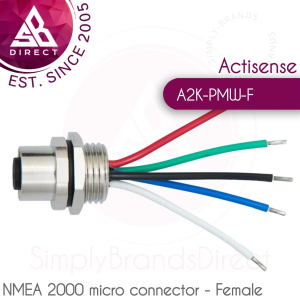kalanka
Active member
I have a new Raymarine Element 7s plotter. I want to connect an AdvanSea AIS receiver. Can I do this using the NMEA 2000 branch off the power cable and a panel connector like this one. My previous SH plotter had the blue and green wires connecting to the AIS feed. If what I propose is feasible, do I just connect to the blue and green wires in the micro connector? Thanks




